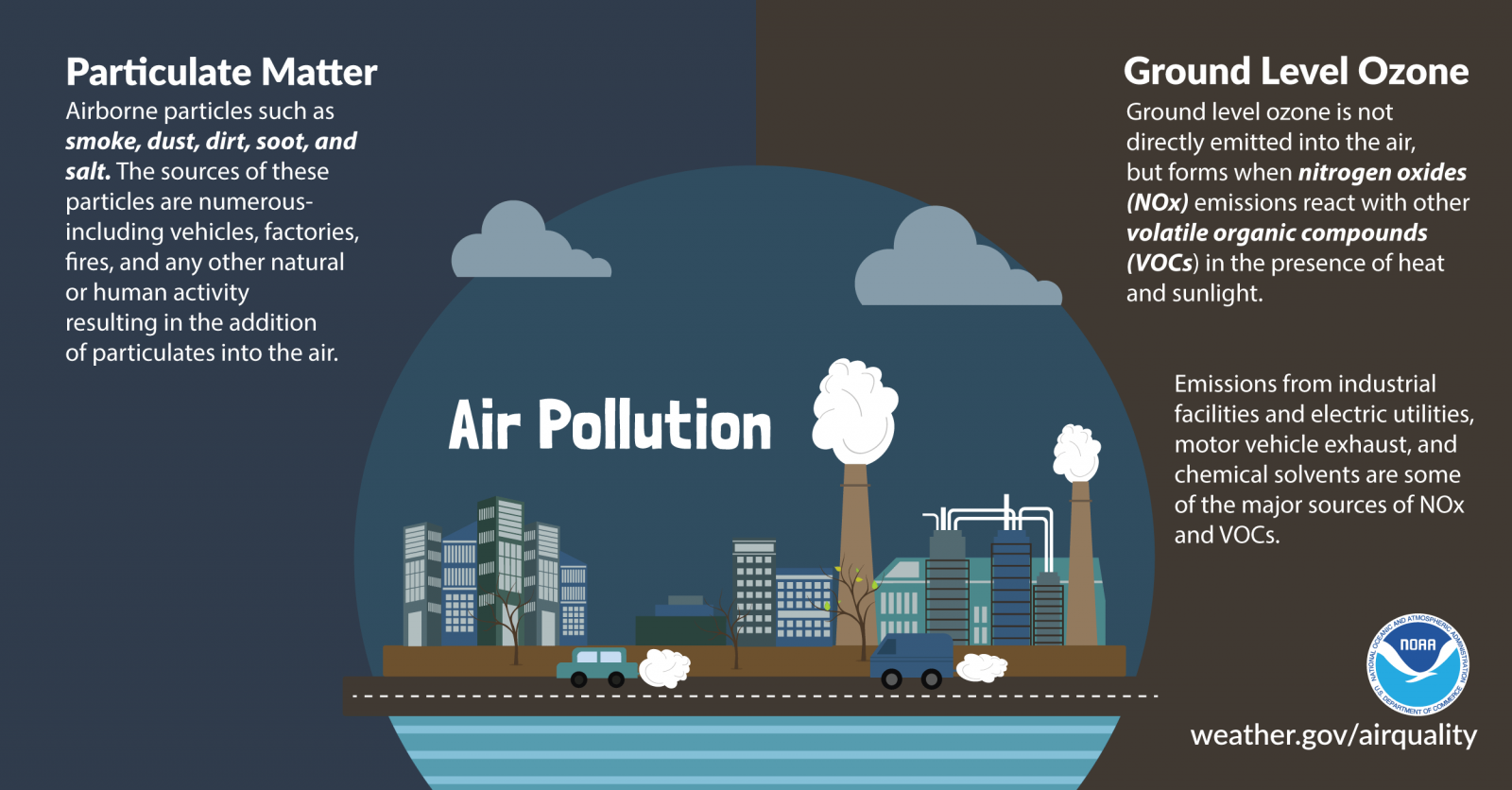
Air quality affects the air we breathe. There are many factors that can lead to poor air quality, but the two most common are related to elevated concentrations of ground-level ozone or particulate matter.
Ground level ozone forms when nitrogen oxides from sources like vehicle exhaust and industrial emissions react with organic compounds in the presence of heat and sunlight. Per EPA, ozone can cause a number of health problems, including coughing, breathing difficulty, and lung damage. Exposure to ozone can make the lungs more susceptible to infection, aggravate lung diseases, increase the frequency of asthma attacks, and increase the risk of early death from heart or lung disease (see https://airnow.gov/index.cfm?action=pubs.aqiguideozone).
Particulate matter in the air consists of solid and liquid particles including smoke, dust and other aerosols, some of which are directly emitted and others are resulting from chemical transformations., The sources of these particles are numerous- including vehicles, factories, power plants, fires, other natural phenomena and human activities. Particle pollution is linked to a number of health problems, including coughing, wheezing, reduced lung function, asthma attacks, heart attacks, strokes and even early death (see https://airnow.gov/index.cfm?action=pubs.aqguidepart).
The weather can have a significant impact on air quality since different aspects of the weather affect the amounts of ozone and particulates that are present in a specific area. Sunshine, rain, higher temperatures, wind speed, air turbulence, and mixing depths all affect pollutant concentrations.
Sunshine can cause some pollutants to undergo chemical reactions, resulting in the development of smog
Higher air temperatures can speed up chemical reactions in the air
Rain typically results in less pollution since it washes away particulate matter and can also wash out pollutants that are dissolvable
Wind speed, air turbulence, and mixing depth all affect how pollutants disperse, or spread out from an area
National Weather Service provides model forecast guidance for ozone, dust and fine particulate matter twice daily and smoke predictions once daily for next 48 hours. State and local agencies use NWS model guidance to issue air quality forecasts that weather forecast offices (WFOs) help disseminate. Air quality forecasts of unhealthy (code orange) or worse air quality that are shared with WFOs get displayed on NWS warning maps as air quality alerts. When Air Quality Alerts are in effect, there are many actions you can take to stay safe and protect your health.
Stay informed about air quality conditions in your area.Information is provided by EPA, NWS and the media
Choose a less-strenuous activity
Shorten and take more breaks during outdoor activity
Reschedule activities to the morning or to another day
Move your activity inside where ozone levels are usually lower
Spend less time near busy roads
If you would like to help reduce air pollution, you can take the following measures:
Eliminate tobacco smoke
Reduce your use of wood stoves and fireplaces
Don’t burn candles, leaves, garbage, plastic or rubber
Use HEPA air filters and air cleaners designed to reduce particles
Drive less: carpool, use public transportation, bike or walk
Keep car, boat and other engines tuned
Inflate tires to the recommended pressure
When refueling: stop when the pump shuts off, avoid spilling fuel, and tighten your gas cap
Use low-VOC paint and cleaning products, and seal and store them so they can’t evaporate
Choose energy saving appliances
Set thermostats higher in summer and lower in winter
Turn off lights you are not using
(https://airnow.gov/index.cfm?action=pubs.aqiguideozone) and
(https://airnow.gov/index.cfm?action=pubs.aqguidepart)
EPA compiles the official air quality forecasts at https://www.airnow.gov/ and NWS provides hour-by-hour predictions of air quality at https://airquality.weather.gov/.